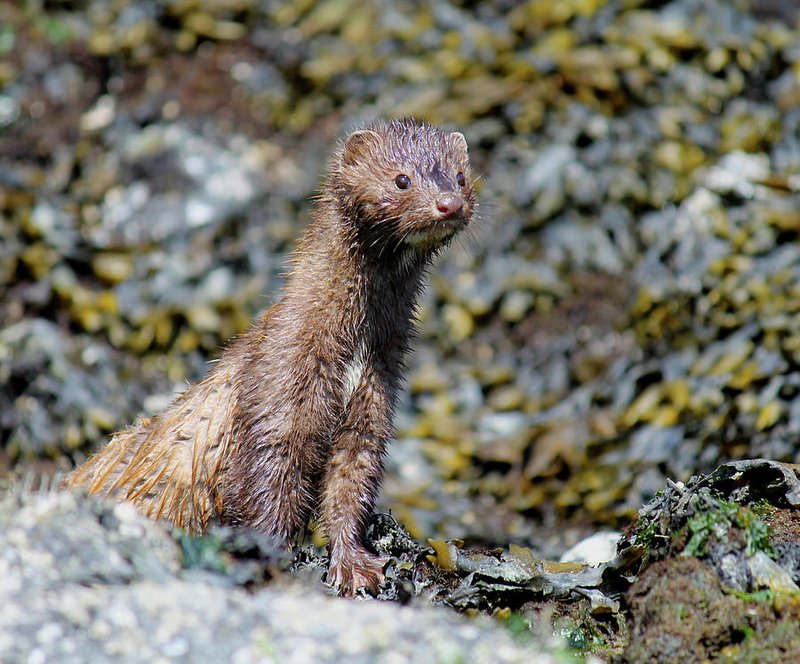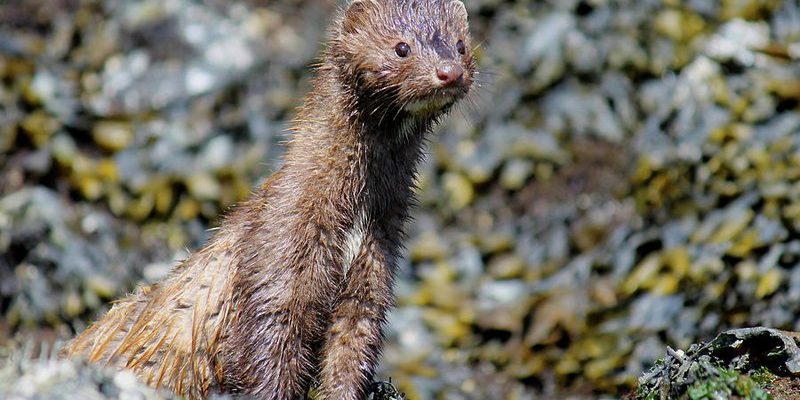
Imagine a creature that’s sleek, nimble, and has a rich, chocolate-brown coat that glistens in the sunlight. That’s the mink for you! These small mammals belong to the weasel family and are often found in lush habitats near water sources. Their charming appearance can easily capture your heart, but there’s much more to these fascinating animals than meets the eye.
Minks are not just pretty faces; they’re skilled hunters and adaptable survivors. With a combination of curiosity, agility, and clever instincts, they navigate their environments with grace. But how much do you really know about minks? Whether you’re an animal lover or just someone who appreciates wildlife, getting to know the mink can be quite rewarding.
What Exactly is a Mink?
Minks are semi-aquatic mammals known for their playful behavior and agile bodies. They belong to the Mustelidae family, which also includes otters, ferrets, and badgers. There are two main species of minks: the European mink (Mustela lutreola) and the American mink (Neovison vison). The American mink is the more commonly recognized species, especially in North America.
You might be wondering what makes minks so special. Well, aside from their luxurious fur, which has historically made them targets for the fur industry, these animals play a critical role in their ecosystems. They’re often seen as indicators of environmental health, thriving in areas with rich biodiversity.
With their elongated bodies, short legs, and private personalities, minks are truly unique. They have keen senses and sharp teeth, allowing them to be effective predators, feasting on fish, small mammals, and birds. Their adaptability to both land and water makes them a captivating study in wildlife behavior.
Physical Characteristics
Minks are small but mighty! Adult minks typically weigh between 1.5 to 4.5 pounds, with a body length ranging from 20 to 26 inches, including their bushy tails. Their fur is not only beautiful but also functional, providing insulation and waterproofing. This is essential for an animal that spends a significant amount of time in water.
Despite their relatively small size, minks are built for speed and agility. Their slender bodies allow them to squeeze into tight spaces and navigate through thick brush. They have webbed feet, which enhance their swimming abilities, making them adept at stalking fish and other aquatic prey.
Their coloration varies, but most minks boast a rich brown coat, which can appear almost black in certain light. Some minks have distinctive white patches on their chins or throats, adding to their charm. This color variation helps them blend into their surroundings, providing camouflage from predators and prey alike.
Natural Habitat
Where do minks call home? These versatile creatures thrive in a variety of habitats, but they are most commonly found near rivers, lakes, and marshes. They often create dens near water sources, taking advantage of the abundance of food. Minks prefer environments that offer plenty of cover, like dense vegetation, which helps protect them from predators.
The American mink, in particular, has adapted well to both rural and urban environments. You might spot them in wetlands, along coastlines, or even in suburban areas where ponds are present. This adaptability is one of their key survival traits, allowing them to flourish in diverse settings.
While they are skilled swimmers, minks also spend considerable time on land. They are known to travel significant distances in search of food or a suitable den. This highlights their resourcefulness and ability to thrive in varying conditions, whether it be dense forests or open fields.
Diet and Hunting Behavior
Minks are carnivorous, and their diet is as varied as their habitats. Primarily, they feast on fish, amphibians, and small mammals like voles and rabbits. They’re also known to scavenge for birds, invertebrates, and even carrion when necessary. Their sharp senses play a crucial role in locating food, allowing them to detect movement and scents from a considerable distance.
When it comes to hunting, minks exhibit impressive skills. They are stealthy stalkers, often lying in wait before pouncing on their unsuspecting prey. Once captured, they use their powerful jaws to deliver a quick, lethal bite. The hunting style of a mink reflects its agility — they can swim rapidly and maneuver skillfully both underwater and on land.
Interestingly, minks are known to cache their food, storing any surplus for later consumption. This behavior showcases their intelligence and adaptability, ensuring they have enough to eat during leaner times. It’s fascinating to see how these small mammals use their instincts and physical traits to thrive in the wild.
Reproduction and Lifecycle
The mating season for minks typically occurs in late winter to early spring. After a gestation period of about 30 to 60 days, females give birth to a litter of 2 to 8 kits. The kits are born blind and helpless, relying heavily on their mother for warmth and sustenance during the early stages of life.
As the kits grow, they begin to explore their surroundings, often under the watchful eye of their mother. By around 8 to 10 weeks of age, these young minks start to learn essential survival skills, including hunting and foraging. It’s a critical time for them, as their survival depends on mastering these skills before venturing out on their own.
Interestingly, minks can live up to 3 to 4 years in the wild, but they may face threats from predators such as owls, foxes, and humans. In protected environments, however, some minks can live up to 10 years. The challenges of their lives and the drive to survive truly shape their development and behaviors.
Conservation Status
Over the years, minks have faced various challenges, particularly from habitat loss and hunting. While the American mink population is currently stable, the European mink is considered endangered, primarily due to habitat destruction and competition with the introduced American mink.
Conservation efforts are in place to help protect the European mink and its natural habitats. These initiatives highlight the need for balanced ecosystems where minks can thrive without threat from human activities like pollution or urban development. It’s essential to maintain healthy waterways and forested areas to support the survival of these beautiful creatures.
Additionally, public awareness plays a crucial role in conservation. By understanding the importance of minks in our ecosystems, we can advocate for their protection and promote responsible wildlife practices that benefit both minks and their habitats.
Table of Mink Facts
| Fact | Description |
| Species | European mink (Mustela lutreola), American mink (Neovison vison) |
| Weight | 1.5 to 4.5 pounds |
| Length | 20 to 26 inches (including tail) |
| Lifespan | 3 to 10 years (in captivity) |
| Diet | Fish, small mammals, amphibians, birds |
| Habitat | Near water sources, wetlands, forests |
Behavior and Social Structure
Minks are generally solitary animals, preferring to live alone rather than in groups. This independence allows them to be territorial and establish their own feeding grounds. They use scent markings to communicate their presence to other minks, signaling whether an area is occupied. This is a fascinating aspect of their behavior, showcasing how they interact with their environment.
Though they are solitary, minks can exhibit playful behavior, especially when they are younger. They often engage in wrestling or chasing games, which help them hone their hunting skills. This playful nature is a great reminder that even tough predators have a softer side, particularly during their formative years.
While minks can be aggressive if threatened, they generally avoid confrontation. Their agility allows them to escape rather than fight, making them remarkable escape artists. This ability contributes greatly to their success in the wild, as they can evade predators and navigate various landscapes with ease.
Comparing Mink to Other Mustelids
The Mustelidae family is quite diverse, containing animals like weasels, otters, and ferrets. While minks share several characteristics with these relatives, they possess unique traits that set them apart. For example, while both minks and ferrets are slender and agile, minks are more adapted to aquatic environments, with their webbed feet and sleek bodies.
Otters, on the other hand, are social creatures and often live in groups, unlike solitary minks. Otters are also more playful in their interactions, frequently engaging in games with one another in water. In contrast, minks are more reserved, focusing more on hunting and individual survival. This highlights the fascinating range of behaviors across the Mustelidae family.
Interestingly, minks have a critical role in controlling rodent populations, much like other mustelids. They help keep ecosystems balanced by preying on small mammals, making them important contributors to their habitats. Understanding these relationships helps underline the importance of all mustelids in nature.
FAQ
What do minks eat?
Minks are carnivorous creatures that primarily feed on fish, amphibians, and small mammals. They’re skilled hunters, capable of catching various prey both in water and on land. In their search for food, they also scavenge for birds and invertebrates, showcasing their adaptability and resourcefulness.
Where do minks live?
Minks thrive in a variety of habitats, including riverbanks, marshes, and wetlands. They’re often found near water sources, as these areas provide abundant food and cover. In some cases, minks can adapt to urban environments, finding suitable homes in suburban areas with ponds or lakes.
How fast can minks swim?
Minks are agile swimmers, capable of moving quickly through water. While exact speeds can vary, they are known to be speedy enough to chase down fish and evade predators. Their webbed feet and streamlined bodies help them glide effortlessly through aquatic environments.
Do minks have any natural predators?
Yes, minks do have natural predators, including owls, foxes, and larger birds of prey. These animals may pose a threat to minks, particularly when they’re young or vulnerable. However, minks’ agility allows them to evade many of these predators.
How do minks communicate with each other?
Minks primarily communicate through scent marking. They leave their scent in their territory, signaling to other minks whether an area is occupied. Additionally, they may use vocalizations and body language to express their mood or alert others to danger.
Are minks social animals?
No, minks are generally solitary animals. They prefer to live alone and establish their own territories. While they might exhibit playful behavior when they are young, they usually avoid social interactions as adults, focusing instead on survival and hunting.
What is the lifespan of a mink?
In the wild, minks typically live around 3 to 4 years, although some may reach up to 10 years in captivity. Their lifespan can be affected by various factors, including predation, habitat quality, and availability of food.
Can minks be domesticated?
While minks are not commonly kept as pets, they can be domesticated to some extent. However, they retain their wild instincts and can be challenging to care for. They require a lot of space, stimulation, and a proper diet to thrive, making them more suitable for experienced handlers than as typical household pets.
Why are minks considered important to ecosystems?
Minks play a vital role in their ecosystems by controlling rodent populations and acting as prey for larger predators. They help maintain the balance of their habitats, contributing to healthy ecosystems where various species can coexist. Understanding their ecological importance highlights the need for conservation efforts to protect their environments.
What can be done to conserve minks?
Conservation efforts for minks involve protecting their natural habitats and raising public awareness about their ecological role. Supporting wildlife organizations and advocating for sustainable practices can help ensure minks and their environments remain healthy for future generations. It’s essential to recognize the interconnectedness of all species and work towards their preservation.

